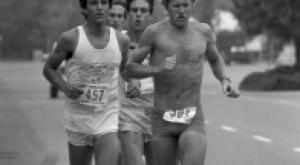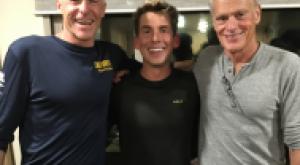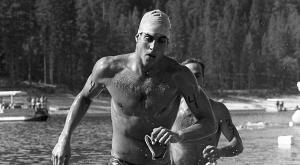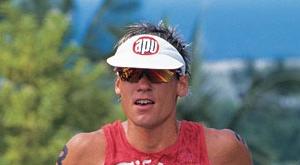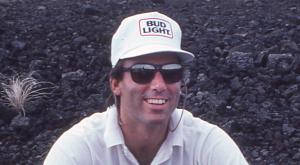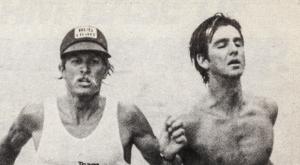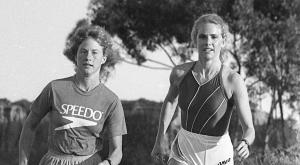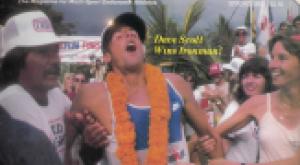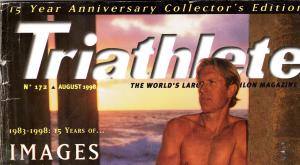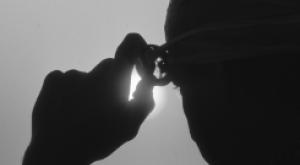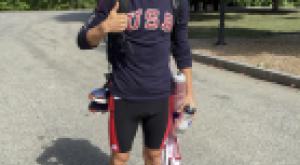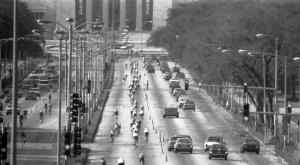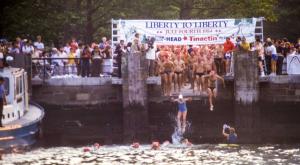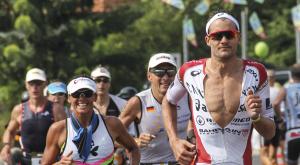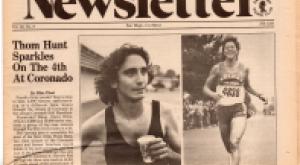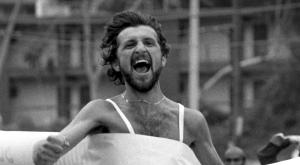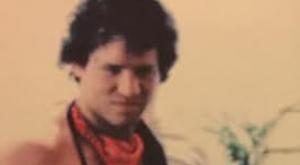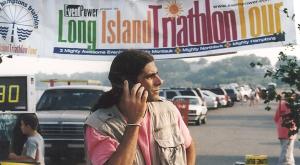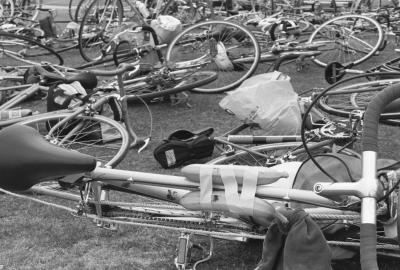
Mike Plant photo
The history of sport is the history of civilization; an appropriate and focused lens through which to observe, dissect, detail, and discern the ways in which humans interact as social beings. And the short history of triathlon begs for a longer lens on which to scan the landscape that rides beneath our modern feet. For me, anyway, there are few things more engaging and more revealing than an historical sociology of sport. It has helped me to understand why I’ve done, and will forever do, completely ridiculous things. The battles in sport have both given rise to war and created peace; men and women killing and healing equally because of a game. At times it appears silly, these small groups and individuals rolling balls, swinging clubs, and running in circles with nowhere to go. Collectively, athletes and organizers of sport, have created and then attached reason and motive to the formerly inane--racing a bicycle across all of North America, a dog-pulled sled across frozen tundra, lifting refrigerators overhead, flipping motorcycles with bodies attached, video-gaming vying for Olympic inclusion--it is no wonder that the defining lines of sport are as blurred as base-path chalk. And every time our society seems to grasp the idea or at least invest their own interpretation into the great whys of these seemingly endless marches of made-for-profit and made-for-madness spectacles of athletic endeavor, a new kid comes along and flies his body and his chosen (insert equipment here) further through the air. Even when the rootsy subculturalist in search of personal physical expression shuns the spotlight and correlative cash, if a TV-type can get it funded, put it on the box, and attach a generation to it, then a new sport is formed. Boom! Reality something. It’s a terribly strange paradigm, this 21st century, media-driven mode of dramatic sports development. Especially when set up against the steadfast traditions and dogma of our historical sporting Big Four (basketball, baseball, football, and hockey). The irony is rampant, the narrative as slippery as a watermelon seed. Street skaters and snowboarders using personal coaches, scientific diets, and oxygen tents while 2nd string left-fielders from the Triple A League are found with needles in their lockers—what’s a hypnotized sports fanatic to do? But that’s part of the beauty of sport as a reflection of society—it’s not that hard to take a page from a play book and apply it to the political economy or some long range demographic forecasting. Sport reflects the world which shines back a kind of truth, if you can speak the language and read the signs. Not always pleasant, sport gives us one of the last great opportunities to view the human condition. # # # Along comes the sport of triathlon. Predating the term “multi-sport,” which creates cross-training, which is basically a marketing descriptive invented to help buyers understand, identify, and then purchase a new category of shoes. It’s called box office, baby, and a shining example of capitalism riding shotgun on the shoulders of a few folks down near San Diego who decided that you could actually combine three endurance sports and not have to call 911 after the second one. That was over forty years ago on a piece of boggy, mud-dredged, and reclaimed land from the bottom of Mission Bay. Originally labeled, False Bay in 1542 by Portuguese explorer, Juan Rodriguez Cabrillo as he mistook the marshland entrance for the mouth of the mighty San Diego Bay, Mission Bay’s bottom was piled and packed into interestingly usable terrestrial shapes—spits and ribbons and causeways of reclaimed bay bottom. Lined with cheap asphalt, a zero-development policy, and given a festive, Spanish-sounding name, Fiesta Island is where we locate the origins of modern triathlon. But it is in the rebellious 1974 hearts of the handful of San Diego Track Club members who, in Timothy Learyesque fashion, created the dare that would become triathlon. And then took it. For the record, there is little in the way of official documentation—a grainy copy of a SDTC newsletter, a few hand-written notes, a bike long since rusting in a quiet garage corner. Progenitor race directors, Dave Pain, Jack Johnstone, and Don Shanahan, the collective “founders” of triathlon (with all apologies to those who were unfamously close to that moniker), are little known outside a narrowing concentric circle of aficionados. It could’ve been anyone dabbling in sporting that consisted of more than one event—a beach lifeguard style swim-run-swim, a children’s pass, punt, and kick competition, a track and field decathlon—but it wasn’t. And what we have is one man with the appropriate surname of Pain who organized an annual run/swim for his birthday and an unlikely couple who simultaneously decided to stage a swim/bike/run event for a handful of SDTC folk on a Wednesday night after work. The entry fee for Pain’s first event on July 31st of 1972 was either zero or very little. Heading towards his 90th birthday, he doesn’t remember. “I would get calls from running magazines wanting to make the event much bigger but I wasn’t interested,” he recalls. The entry fee for the first Mission Bay Triathlon was one dollar and proceeds were passed off to someone to go buy as much beer as they could. That Wednesday night of September 25, 1974, there was $46 worth of suds shared after the last finisher arrived to the car headlights pointed near the sandy beach finish. “I had tossed out the idea (of a swim/bike/run event) to the board of the Track Club,” Shanahan remembers. “Most of the others looked at me kind of weird but Dave Pain suggested I speak with this guy, Jack Johnstone.” Johnstone, for his part, was only thinking about a swim/run event. “When Shanahan and I spoke I discovered that he wanted to add a bike portion…I didn’t even own a bike at the time. ‘What the hell’ I thought. ‘Let’s go for it.’” The result was an event that remains without a specific known distance, the result of combining several short runs with several short swims and a bike ride around the island. The beauty of doing a triathlon history is in unveiling an accidental brilliance, a rare and emerging dichotomy that, viewed in arrears, stands as if planned by the best producers of any period. Pain, Shanahan, and Johnstone, for their part, give themselves little or no credit. Or maybe they do, but just a little. Eliot said that “if you haven’t the strength to impose your own terms upon life, you must accept the terms it offers you.” Triathlon, and maybe a whole host of other formerly strange, they’ll-never-buy-it sports are in existence because a few people, and then a few more decided they wanted to impose their own sport on their own life. Certainly there is no single reason why the sport of triathlon exists and appears eminently healthy. But when set against the scripted Survivorisms and cliché’d storylines seen in emerging media games and sport, the organic roots born of Cabrillo’s mistake and Pain’s birthday bash and the Shanahan/Johnstone hunch stand as reason enough that a lot of people find the same pull. Scott TinleySan Diego, Spring 2013


